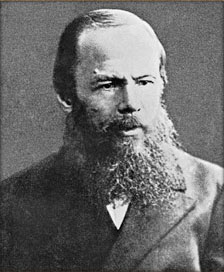The dynamic and lively dialogues of the characters, replete with witty puns and unexpected wordplay, were constructed accordingly. The very title of the combined story “Someone Else’s Wife and Husband Under the Bed” refers the reader to similar titles of popular vaudevilles of the 1830s-1840s, such as “The Husband in the Fireplace, and the Wife as a Guest” by Fyodor Koni or “The Husband from One Place, Another to Another” by Dmitry Lensky.
The text of the story also shows a connection with the traditions of satirical feuilletons and essays of the 1840s. The characters’ surnames have a certain semantic meaning.
Connection with other works
Dostoevsky later turned to the vaudeville style, for example, when writing the story “Uncle’s Dream”.
The theme of the deceived husband appears again in the writer’s work in 1870. In the story “The Eternal Husband”, Dostoevsky approached the problem from a psychological side.
Stagings
The story was adapted for staging on stage. In 1900, V. Stromilov presented a stage version of the work under the title “The Jealous Husband”. In 1912, playwright Sergei Antimonov staged a play called “Someone Else’s Wife and Husband Under the Bed”. In 1922, a dramatization with the same title was made by playwright Nikolai Krashennikov.
In 2013, the Chisinau Theater named after A.P. Chekhov stages the play “Someone Else’s Wife and Husband Under the Bed”. Script and direction – B.M. Aksenova, set design by J. Mateja, costumes by S. Cojocaru, musical arrangement by A. Aksenova, dances by M. Stashok. Shabrin by K. Haret, Tvorogov by G. Boyarkin, Elizaveta by M. Stashok, Shabrina by A. Haret-Tuz, Bobonitsyn by D. Koev, General by D. Perev.
In 1962, a Polish television film of the same name was shot based on the story, directed by Andrzej Wajda. In 1964, the Yugoslav director Sava Mrmac [Serb.] shot a television film based on the story, Something That Cannot Be Said. In 1967, the Polish director Stanislav Różewicz shot a television short film, The Husband Under the Bed [pol.], based on Dostoevsky’s story.
In 1968, German director (FRG) Oswald Döpke [ger.] made the film “Strange Woman and Man Under the Bed”. In 1969, the film “Cuckolded Under the Bed” was made by Mexican director Ismael Rodriguez [esp.].
The story was also filmed in 1984 by director Vitaly Melnikov.
